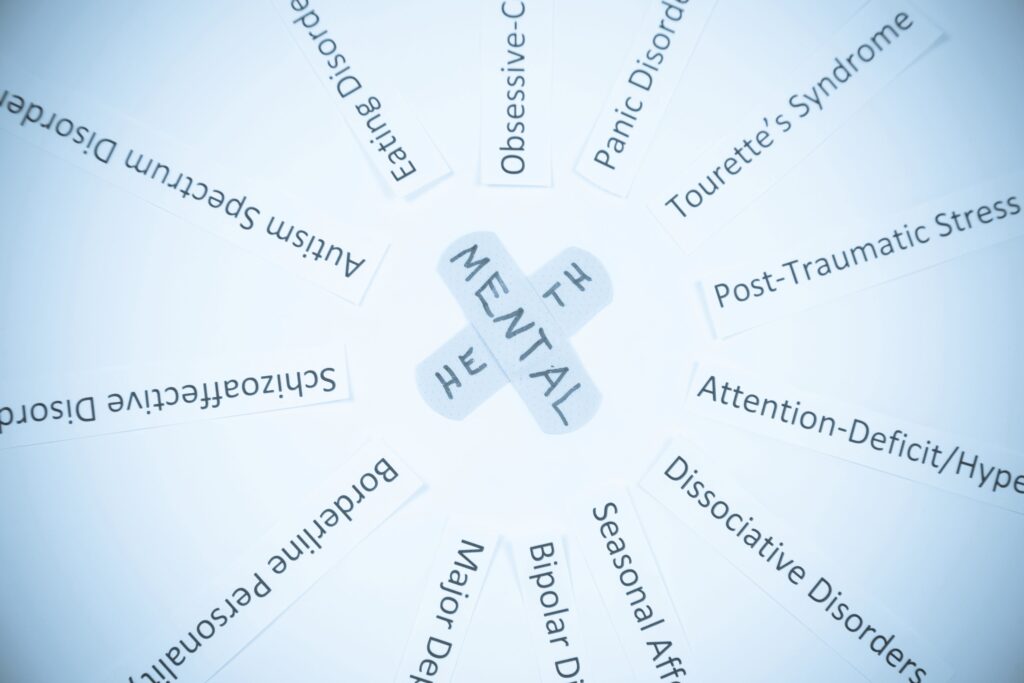The difference between neurologists and psychiatrists is often the root of the confusion of many patients. Moreover, it is not always simple to tell the difference between neurological and psychiatric symptoms. Parkinson’s Disease, Huntington’s Disease, epilepsy, multiple sclerosis, and Alzheimer’s Disease are all neurological illnesses that entail dysfunction or injury to the nervous system, including the brain, spinal cord, and nerves. Neurologists also treat infections of the nervous system. While disturbing behavior and emotional state, on the other hand, are characteristics of mental illnesses.
Moreover, damage to and degeneration of the nervous system are common in neurological diseases, and this damage can occasionally disrupt the transmission between neurons. When this happens, the alterations might show as issues with behavior, bodily control, memory, and mood. To put it another way, the same issues that psychiatrists deal with. Thus, many individuals mix up the terms neurologist and psychiatrist since they seem to address the same sorts of illnesses or diseases. The fact is that they are intertwined.
To easily understand the difference between neurologists and psychiatrists, below is their short description:
Neurologist – A neurologist is a doctor who specializes in the diagnosis and treatment of nervous system illnesses and disorders. In addition, sleep problems, epilepsy, brain traumas, migraine headaches, and brain and spinal cord malignancies are some of the most common diseases that neurologists in Makati treat.
Psychiatrist – A psychiatrist is a doctor who specializes in the treatment of mental health issues. These disorders have similar signs and symptoms that show mental activity such as memory, emotions, sensory perception, attention, and pleasure. Moreover, psychiatrists in Pasig specialize in subjects like geriatric psychiatry, forensic psychiatry, child and adolescent psychiatry.
Furthermore, the difference between neurologists, neurosurgeons, and neuroscience is also important to learn so it will not be used and assume interchangeably. A neurosurgeon can operate on the brain and spinal cord, but a neurologist usually cannot. Neurosurgeons are capable of guiding you through your diagnosis, treatment plan, surgery, and post-recovery choices, in addition to conducting surgical operations. Moreover, neurosurgeons are experts at resolving problems with the brain and other neurological components of the body. In comparison, the neuroscientists are the researchers. They study the structure, function, genetics, and physiology of patients and laboratory animals to understand more about it. Their goals are to discover the fundamental causes of neurological problems and learn how their discoveries may aid neurologists in treating nervous system ailments. Hence, a neurologist will have a medical degree, whereas a neuroscientist will have a Ph.D. The amount of specialization that generally happens in each profession is another significant contrast between neurology and neuroscience.
Thus, neurologists, neurosurgeons, neuroscientists, and psychiatrists all play an essential role in maintaining our well-being and physical health. But we are also aware that mental health is often left behind for the damages it brings are often cannot be seen by our bare eyes. Nevertheless, it is always as important as our physical health and well-being.
Our emotional, social, and psychological lwell-being are all part of our mental health. It has an influence on the way we think, feel, and act. It also impacts how we deal with stress, interacts with people, and make good decisions. Mental health is crucial at every stageof life, including childhood, adolescence, and maturity. Furthermore, poor mental health and mental illness are not synonymous, despite the phrases being frequently used interchangeably. A person’s mental health can deteriorate without being diagnosed with a mental disorder. A person with a mental illness can also go through physical, mental, and social well-being phases.
Both mental and physical health are vital components of total well-being. Depression, for example, raises the risk of various physical health issues, especially long-term illnesses like diabetes, heart disease, and stroke. In the same way, the existence of chronic illnesses might raise the risk of mental Disease. It’s also essential to understand that, depending on various variables, a person’s mental health might vary over time.
When a person’s resources and coping abilities are stretched beyond their limits, their mental health may suffer.
A variety of factors causes mental illness. Early adverse life experiences, such as a history of abuse or trauma, experiences related to other ongoing chronic medical conditions, biological factors or chemical imbalances in the brain, use of alcohol or drugs, and feelings of loneliness or isolation can all contribute to the risk of mental illness.
Different sorts of mental diseases or disorders can affect people, and they frequently do so simultaneously. Mental disorders can be episodic or occur over a short period; this indicates that mental Disease has distinct origins and endings. Thus, mental illness can be short-term or long-term.
There are about 200 different forms of mental illnesses. Here following are some of the most common mental disorders and diseases:
Agoraphobia – is an anxiety condition in which you dread and avoid locations or circumstances that could make you feel imprisoned, powerless, or ashamed and make you feel trapped, helpless, or embarrassed. You are afraid of a real or imagined circumstance, such as taking public transit, being in open or confined places, waiting in a line, or being in a crowd. The anxiety stems from the idea that there will be no simple way to leave or seek treatment if the anxiety worsens. Most persons who acquire agoraphobia do so after experiencing one or more panic attacks, which makes them fearful of another attack and avoid locations where it could happen.
Alzheimer’s Disease – is a neurological condition that causes the brain to shrink and brain cells to die over time. Alzheimer’s Disease is the most ubiquitous form of dementia, defined as a progressive loss of cognitive, behavioral, and social abilities that impair a person’s capacity to operate independently. Forgetting recent events or discussions is one of the first indications of Alzheimer’s Disease. A person with Alzheimer’s, Disease will acquire significant memory impairment and lose the capacity to carry out daily duties as the disease advances.
Amnesia – The loss of memories, such as facts, knowledge, and experiences, is amnesia. Amnesia, sometimes known as an amnestic syndrome, affects persons typically aware of who they are. They may, however, struggle to learn new information and develop new memories. Damage to regions of the brain that are important for memory processing might induce amnesia. Moreover, amnesia can be permanent.
Anorexia Nervosa – often called anorexia, is an eating illness marked by unusually low body weight, a strong fear of weight gain, and a false sense of body weight. Anorexics emphasize maintaining their weight and form, and they will go to great lengths to achieve it, even if it means disrupting their daily lives. People with anorexia generally drastically restrict their food intake to avoid weight gain or maintain their weight loss. They may restrict their calorie intake by vomiting after meals or abusing laxatives, diet aids, diuretics, and enemas. They could also try to shed weight by over-exercising. No matter how much weight is reduced, the person is still afraid of gaining it again.
Antisocial Personality Disorder – is a mental condition in which a person continuously exhibits no concern for good and wrong and disregards the rights and feelings of others are known as sociopathy. People who have antisocial personality disorder are more likely to be antagonistic, manipulative, or cruel in their treatment of others. They exhibit no sorrow or shame for their actions.
Anxiety – If you have an anxiety condition, you may experience fear and dread in response to specific objects and circumstances. You could also notice physical symptoms of anxiety, such as a racing heart or sweating. It’s natural to have some anxiousness.
Attention Deficit Hyperactivity Disorder – is a condition characterized by a persistent pattern of inattention and or hyperactivity-impulsivity that impairs functioning or development. Inattention is defined as wandering off task, a lack of tenacity, trouble maintaining concentration, and disorganization; these issues are not caused by disobedience or a lack of understanding. Hyperactivity is a person who appears to move around continually, even when it is not suitable, or fidgets, taps, or speaks excessively. Adults may experience severe restlessness or exhaustion from continual activity. Impulsivity is defined as a person’s need for instant pleasure or inability to postpone gratification, as well as a desire for immediate gratification or inability to delay gratification. An impulsive person may be socially invasive, interrupting people frequently, or making significant decisions without considering long-term implications.
Autism Spectrum Disorder – is a complicated developmental disorder marked by chronic difficulties in social interaction, speech, nonverbal communication, and restricted/repetitive behaviors. Each person’s experience with ASD and the intensity of their symptoms is unique.
Bipolar Disorder – formerly known as manic depression, is a mental health disorder that involves emotional highs and lows. Mood swings might happen once a year or several times a year. While the majority of people will feel some emotional symptoms in between bouts, others will not. Although the bipolar illness is a lifelong diagnosis, following a treatment plan might help control your mood swings and other symptoms. Medications and psychological counseling are used to treat bipolar illness in the majority of instances.
Borderline Personality Disorder – is a mental health condition that affects how you think and feels about yourself and others, making it difficult to function daily. Self-esteem difficulties, trouble controlling emotions and behavior, and a habit of insecure relationships are all part of it.
Bulimia Nervosa – Bulimia, also known as binge eating disorder, is a severe, sometimes fatal eating condition. Bulimics may consume a huge amount of food without control and then purge, attempting to get rid of the additional calories in an unhealthy way.
Complicated Grief Disorder – Many signs and symptoms of normal grieving are the same as those of complex grief in the first few months after a death. On the other hand, symptoms of complex sorrow persist or worsen over time, whereas normal grief symptoms decrease with time. Complicated sorrow is a condition of continuous, heightened grieving that prevents you from recovering.
Cyclothymic Disorder – is a mood illness that affects a small number of people. It generates mood swings, although they aren’t as severe as in bipolar I or II illness. When you have cyclothymia, your mood fluctuates significantly from its baseline. You may feel that you are on top of the world for some time, followed by a period of feeling depressed. You may feel steady and fine in between these cyclothymic highs and lows.
Delirium – is a significant impairment of mental faculties that causes muddled thinking and decreased awareness of one’s surroundings. One or more contributory variables, such as a severe or chronic disease, changes in metabolic balance, medicine, infection, surgery, or alcohol or drug intoxication or withdrawal, are frequently identified.
Dementia – is not a specific condition but rather a catch-all phrase for the inability to recall, think, or make judgments in a way that interferes with daily tasks.
Depression – is a mental illness characterized by a chronic melancholy and loss of interest. It affects how you think, feel, and behave, which can lead to a range of mental and physical issues. This mental illness is also known as major depressive disorder or clinical depression.
Dual Diagnosis – a person with a dual diagnosis has a mental illness and alcohol or drug addiction. These circumstances commonly occur simultaneously. At some time in their life, around half of the persons who have a mental condition will also have a drug use issue, and vice versa. The combination of the two situations has the potential to exacerbate both.
Dyscalculia – is a math learning disability. People with dyscalculia struggle with arithmetic on a variety of levels. They frequently struggle with fundamental ideas such as greater vs. smaller. They may also struggle with simple math issues as well as more advanced concepts.
Dyslexia – is a reading impairment characterized by difficulties recognizing spoken sounds and understanding how they connect to letters and words. Dyslexia, often known as reading impairment, affects the parts of the brain that process language.
Dysthymic Disorder – is a type of depression that lasts for a long time or is chronic. You could lose interest in everyday tasks, feel gloomy, be unproductive, have poor self-esteem, and have a general sense of inadequacy.
Narcissistic Personality Disorder – is one of the numerous forms of personality disorder. It’s a mental illness characterized by an exaggerated feeling of self-importance, a strong desire for undivided attention and praise, strained relationships, and a lack of empathy for others. But underneath this confident front hides weak self-esteem that is easily shattered by the least criticism.
Obsessive-Compulsive Disorder – is a condition in which people experience recurrent, unwelcome thoughts, ideas, or feelings that cause them to feel compelled to do something again and over again. Hand washing, checking on items, and cleaning are examples of repeated habits that can severely disrupt everyday tasks and social interactions.
Postpartum Depression – After having birth, some women experience complicated physical, emotional, and behavioral changes. The physiological, social, and psychological changes after delivering a baby are connected to postpartum depression. Many new moms go through various physical and mental changes as a result of their pregnancy.
Post-Traumatic Stress Disorder – is a mental health disorder brought on by witnessing or experiencing a terrible incident. Flashbacks, nightmares, and extreme anxiety, as well as uncontrolled thoughts about the incident, are all possible symptoms.
Prader-Willi Syndrome – is an uncommon genetic condition that causes various physical, mental, and behavioral issues. A continuous sensation of hunger, which generally develops around the age of two, is a major characteristic of Prader-Willi Syndrome. People with Prader-Willi Syndrome are continuously hungry because they never feel satisfied, and they often struggle to maintain a healthy weight. Obesity causes several problems in Prader-Willi Syndrome.
Seasonal Affective Disorder – is a form of depression that is linked to seasonal fluctuations. Every year, SAD begins and ends around the same time. If you’re like most SAD sufferers, your symptoms begin in the fall and last through the winter, sapping your energy and making you irritable. In the spring and early summer, SAD is less likely to induce depression.
Schizophrenia – is a severe mental illness in which patients have aberrant perceptions of reality. Schizophrenia can include hallucinations, delusions, and severely disorganized thought and behavior, making it difficult to operate daily. Moreover, schizophrenia patients need to be treated for the rest of their lives.
References:











